The Panzer 38(t) Tank
The Panzer 38(t) light Tank saw operational service in Poland in 1939 and the battle of France in 1940. This Panzer 38(t) Tank can be found at the Deutsches Panzermuseum in Munster, Germany. It was built in Sweden under license. Its chassis is a little longer than normal. It was not built in Czechoslovakia and captured by Germany like most Panzer 38(t) tanks. It was known in Sweden as a Stridsvagn m/41 Tank. The hull ball mounted machine gun is missing.
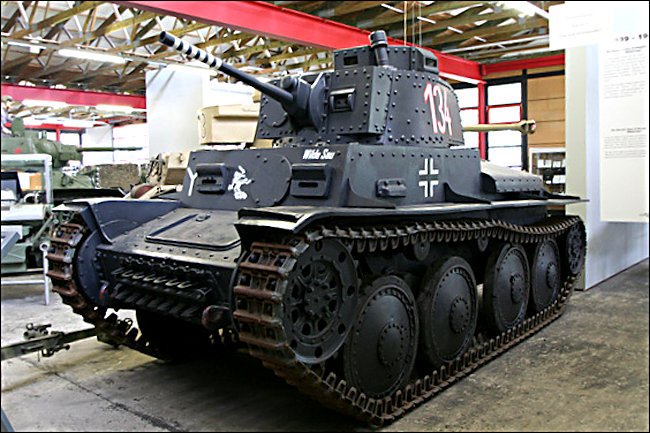
Panzer 38(t) Tank at the Deutsches Panzermuseum in Munster, Germany.
The Panzer 38(t) tank was built in Czechoslovakia by a company called CKD (Prague). It was and upgraded model of their Lt Vz.35 tank, which became the Panzer 35(t). When the Germans invaded Czechoslovakia production was ordered to continue. The German army needed tanks. In 1939 the Czech Lt Vz.38 tank was better than their own Panzer I and Panzer II tanks.
It had a much bigger gun than the German light tanks of 1939. It was fitted with the fast firing Skoda A7 37mm cannon. It could carry 90 rounds of high explosive HE and armour piercing AP rounds.
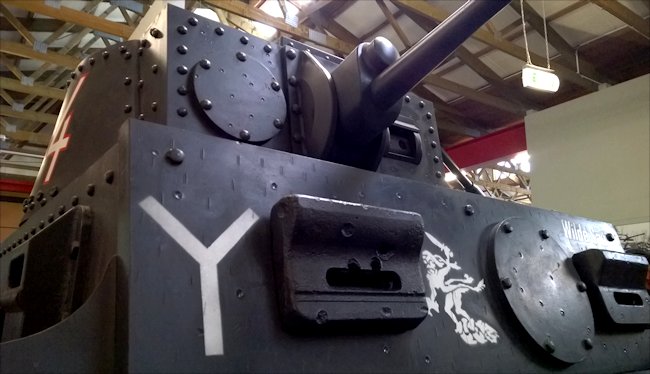
Panzer 38(t) Tank turret with some bullet damage.
Unlike the Panzer Mark I and II light tanks the Panzer 38(t) could take on and knock out any Polish, Belgium, French and British tank they met on the battlefield, with the exception of the British Matilda heavy tank and the French heavy Char B1-bis unless they manage to get a shot into the side or rear.
The Germans liked the Czech Skoda Lt Vz.38 tank but made a few changes. The turret was made larger to make space for an extra crew member. This enabled the commander to fight the tank better without having to worry about loading and unloading the gun. The standard German Tank radio was fitted to each new tank so the tanks could fight better as a coordinated unit.
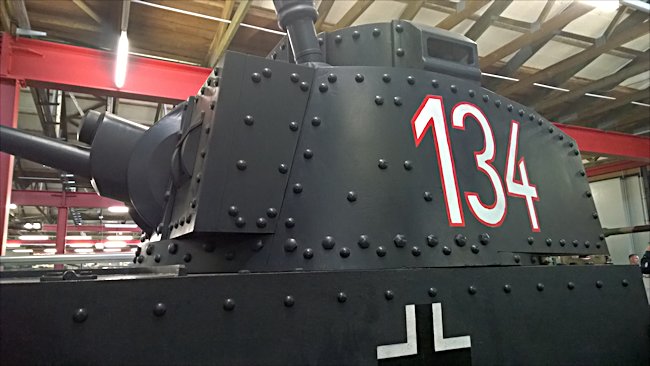
The Panzer 38(t) Tank used riveted armour plating which was quicker to produce than welded armour but not as strong.
The first model of this German ordered tank was designated Panzerkampfwagen 38(t) Ausf. A. It came off the production line in January 1940 just-in-time for the invasion of France. They equipped frontline Panzer Divisions, but were used for flanking attacks and infantry support.
The new Panzer Mark III and IV tanks were used for the frontal blitzkrieg attack in may 1940. The German tank crews liked these Czechoslovakian built tanks. They nicknamed them 'Skodas'. They were mechanically reliable, agile and relatively fast.
They became outclassed with the arrival of the Russian T34/76 and KV-1 tanks on the Eastern front. They were relegated to reconnaissance work and rearguard action, protecting supply lines from infantry and partisan attacks. The Pz. 38(t) chassis so reliable that it form the basis of many self-propelled anti-tank and artillery gun weapons like the Marder III, Grille and the Jagdpanzer 38(t) Hetzer.
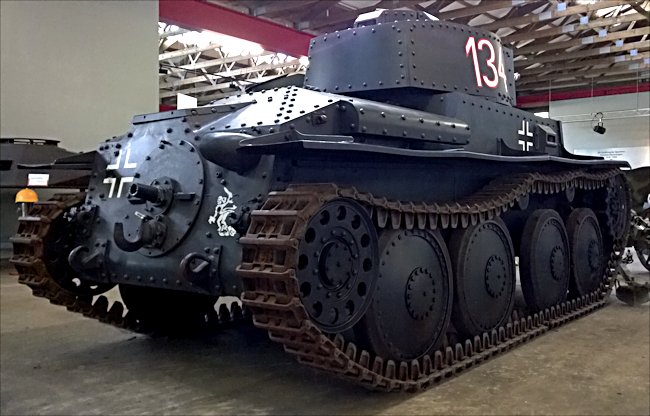
German Panzer 38(t) Tank at the German Tank Museum in Munster, Germany.
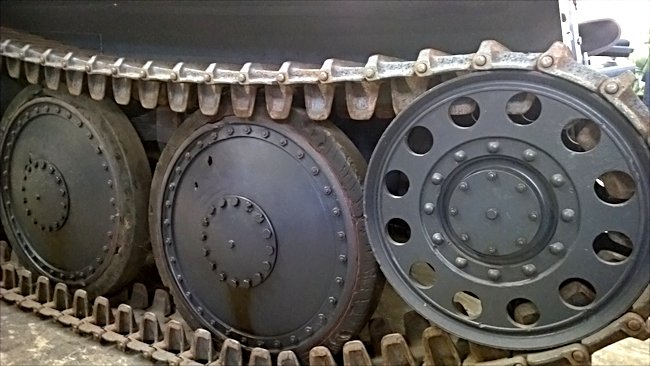
German Panzer 38(t) Tank track wheels with bullet damage.
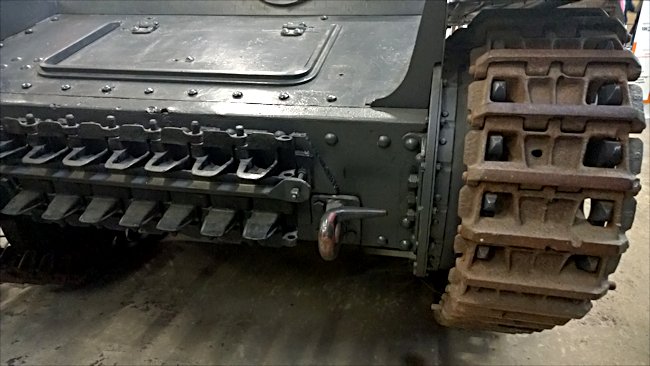
German Panzer 38(t) Tank had spare track bolted to the front armour for extra protection.
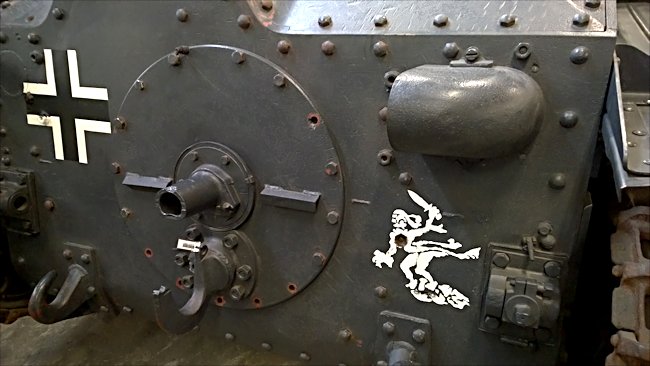
The round hole is where the crank handle was inserted. The engine had to be cranked to start it just like a very early car or lorry. The covered hole just to the right of the demon on a cloud picture was where a heat lamp was inserted to warm up the engine fluids on cold mornings.
Where can I see other Panzer 38(t) tanks?
- PzKpfw. 38(t) Ausf. A Army Technical Museum, Lesany, Czech Republic
- PzKpfw. 38(t) Ausf. F Steve Lamonby Collection, UK
- PzKpfw. 38(t) Ausf. F Victory Park at Poklonnaya Gora, Moscow, Russia
- PzKpfw. 38(t) Ausf. F Kubinka Tank Museum, Russia
- Technical museum, Tolyatti, Samara Oblast, Russia
- Slovak Uprising National Museum, Banska Bystrica, Slovakia
- Auto + Technik Museum, Sinsheim, Germany
- Panzermuseum, Thun, Switzerland
- Sammlung Historische Panzer, Thun, Switzerland
- Schweizerisches Militärmuseum, Full, Switzerland
- Museum in Zeughaus, Schaffhausen, Switzerland
- 2x Swiss Army training ground, Bure, Switzerland
- 2x Armeemuseum, Burgdorf, Switzerland
- Armour and Artillery Museum, Cairns, QLD, Australia
- Swedish Built - Arsenalen Tank Museum, Sweden
- 2x Saad abad King House museum, Tehran, Iran
- 3x Real Felipe Museum, Lima, Peru
- 18th Defence Brigade (18a Brigada Blindada), Lima, Peru
- Iquitos, Peru
- Tacna, Peru
- Fuerte General Belisario Suarez, Ancon, Peru
- 2x Mollendo, Peru
- Panzer 35(t) LT vz.35 - Army Technical Museum, Lesany, Czech Republic
- Panzer 35(t) LT vz.35 - Kalemegdan Military Museum, Belgrade, Serbia
- Panzer 35(t) LT vz.35 - Muzeul Militar National, Bucharest, Romania
- Panzer 35(t) LT vz.35 - National Museum of Military History, Sofia, Bulgaria
WW2 tank books

